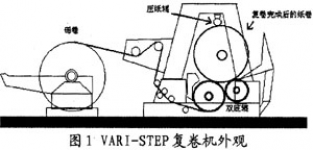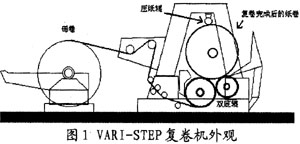
The characteristics of the fieldbus control system and the influence on the computer control system
“After the appearance of computer control systems, sensors, transmitters and actuators in analog instrument systems are widely used in engineering practice. The signal transmission generally adopts the form of 4-20mA current signal. A transmitter or actuator needs a pair of transmission lines to transmit an analog signal in one direction.
“
1 Introduction
After the appearance of computer control systems, sensors, transmitters and actuators in analog instrument systems are widely used in engineering practice. The signal transmission generally adopts the form of 4-20mA current signal. A transmitter or actuator needs a pair of transmission lines to transmit an analog signal in one direction. This kind of transmission method uses a lot of wires, the workload of on-site installation and debugging is large, the investment is high, the transmission accuracy and anti-interference ability are low, and maintenance is inconvenient. The staff in the main control room cannot understand the actual situation of the field instruments, and cannot adjust their parameters and diagnose faults. Therefore, the analog transmitters and actuators at the bottom have become the weakest links in the computer control system, the so-called DCS The development bottleneck of the system. Fieldbus came into being under this situation.
2. Fieldbus technology and its characteristics
Fieldbus technology is an advanced field industrial control technology developed in the late 1980s. It integrates digital communication technology, computer technology, automatic control technology, network technology and intelligent instrumentation and other technical means, and has fundamentally broken through The limitations of traditional “point-to-point” analog signal or digital-analog signal control constitute a fully decentralized, fully digital, intelligent, two-way, interconnected, multivariable, and multi-point communication and control system. Fieldbus is a digital, two-way transmission, multi-branch structure communication network that connects smart field devices and automation systems, and its foundation is smart meters. The intelligent instruments scattered in various industrial scenes are connected as a whole through the digital field bus, and together with the controller and monitor in the control room form the Fieldbus Control System (FCS). By following certain international standards, fieldbus products of different manufacturers can be integrated into the same set of FCS, with interchangeability and interoperability. FCS further delegates the control functions of the traditional DCS to the on-site intelligent instruments, and the on-site intelligent instruments complete functions such as data collection, data processing, control calculation and data output. Field instrument data (including collected data and diagnostic data) are transmitted to the control equipment in the control room through the field bus. The control equipment in the control room is used to monitor the operating status of each field instrument, save the data uploaded by each smart instrument, and complete it at the same time Advanced control functions that a small number of field instruments cannot complete. In addition, FCS can also be connected to the upper-level management network of the enterprise through a gateway, so that enterprise managers can grasp first-hand information and provide a basis for decision-making. Therefore, the field bus has the following outstanding features:
2.1 Openness
The Fieldbus Control System (FCS) adopts an open communication protocol, and devices of different manufacturers that comply with the same communication standard can be interconnected and exchange information. Users can flexibly choose fieldbus products from different manufacturers to form the actual control system to achieve the best system integration.
2.2 Interoperability
Interoperability means that the control equipment of different manufacturers can not only communicate with each other, but also can be configured in a unified manner to achieve the same control strategy and “plug and play”. Devices with the same performance from different manufacturers can be interchanged.
2.3 Flexible network topology
Fieldbus control systems can form different network topologies according to complex field conditions, such as tree, star, bus, and hierarchical network structures.
2.4 Highly decentralized system structure
The field device itself is an intelligent device, with the basic function of independent automatic control, which fundamentally changes the system structure of the combination of centralized and decentralized DCS, forming a brand-new distributed control system, and realizes the complete control function. Dispersion improves the reliability of the control system and simplifies the structure of the control system. After the fieldbus is disconnected from the upper-level network, the independent and normal operation of the underlying equipment can be maintained, and its intelligence is greatly enhanced.
2.5 Highly intelligent field equipment
The traditional DCS uses a relatively centralized control station, which is composed of a CPU unit and an input/output unit. The fieldbus control system completely decentralizes the DCS control station functions to the field control equipment. Only the fieldbus equipment can realize the basic functions of automatic control, such as data acquisition and compensation, PID operation and control, equipment self-checking and self-diagnosis And other functions. The operator of the system can realize remote monitoring in the control room, set or adjust the operating parameters of the field equipment, and can also locate and diagnose the fault with the help of the self-diagnosis function of the field equipment.
2.6 Highly adaptable to the environment
Fieldbus is specially designed for industrial sites. It can use twisted pair, coaxial cable, optical cable, power line and wireless to transmit data, and has a strong anti-interference ability. The commonly used data transmission line is a cheap twisted pair, and allows each site to use the data communication line for power supply, and it can also meet the requirements of intrinsic safety and explosion-proof.
Due to the many advantages of fieldbus, a variety of influential fieldbuses have appeared in the past ten years, such as FOUNDATION fieldbus FF, Profibus, CAN, LONworks, HART, etc., and have been widely used. The following is only a brief introduction to the first two fieldbuses.

3. Introduction to the main fieldbus
3.1 Foundation Fieldbus FF (Foundation Fieldbus)
Foundation Fieldbus is a fieldbus formed by several international fieldbuses after fierce competition, and it was launched by the Fieldbus Foundation. Unlike the proprietary network bus protocol, the FF bus is not affiliated with any company or country. Its bus system structure is a communication model established by referring to the physical layer, data link layer and application layer in ISO’s OSI model, and adding a user layer. FF has the support of almost all famous instrument manufacturers in the world, and at the same time, it abides by the IEC protocol plan, and is basically in line with the IEC fieldbus international standards and drafts, plus its technical advantages, so it is very hopeful that it will become the future The main international standards.
The FF bus provides two physical layer standards, H1 and H2. Hl is a low-speed bus used for process control. The transmission rate is 31.25Kbps, and the transmission distance is 200m, 450m, 1200m, and 1900m (extendable by adding repeaters). It can be powered by the bus and supports intrinsically safe devices and non-intrinsically safe buses. equipment. H2 is a high-speed bus with a transmission rate of 1Mbps (the transmission distance is 750m at this time) or 2.5bps (the transmission distance is 500m at this time). The number of nodes in each section of H1 and H2 can be up to 32, and the number of nodes can be up to 240 after using a repeater. H1 and H2 can be interconnected by a bridge. The outstanding features of FF are equipment interoperability, improved process data, earlier predictive maintenance and reliable safety.
3.2 Process field bus Profibus
Profibus was proposed and strongly advocated by Siemens. It has successively become the German national standard DIN19245 and the European standard EN50170. It is an open and independent bus standard that acts as a communication network in machinery manufacturing, industrial process control, and intelligent buildings. Profibus is composed of three series: Profibus-PA, Profibus-DP and Profibus-FMS. Profibus-PA (Process Automation) is used for low-speed data transmission in process automation. Its basic characteristics are the same as FF’s H1 bus. It can provide bus power supply and intrinsic safety, and is supported by application-specific integrated circuits (ASIC) and software. Profibus-DP is compatible with Profibus-PA, and its basic characteristics are the same as FF’s H2 bus. It can realize high-speed transmission. It is suitable for high-speed data transmission between dispersed external equipment and automatic control equipment, and is used to connect Profibus-PA and processing automation. Profibus-FMS is suitable for medium-speed data transmission in general automation, and is mainly used for sensors, actuators, electric drives, PLC, textile and building automation, etc. The latter two series adopt RS485 communication standard, the transmission rate is from 9.6kbps to 12Mbps, and the transmission distance is from 1200M to 100m (related to the transmission rate). The basic mode of media access control is the token mode between the master station and the master-slave mode between the master station and the slave station, as well as a hybrid mode combining these two methods. Profibus is a relatively mature bus, which is widely used in engineering.
4. The influence of FCS on computer control system
(1) In FCS, with the help of fieldbus technology, all I/O modules are placed on the industrial site, and all signals are converted into standard digital signals on the spot through the distributed intelligent I/O module, only one The cable can connect all the field sub-stations, and then transmit the field signal to the control room monitoring equipment very simply, which reduces the cost, and is easy to install and maintain. At the same time, the digital data transmission enables the system to have a high transmission speed. And strong anti-interference ability.
(2) FCS is open. In FCS, both software and hardware comply with the same standard, with good interchangeability and easy updating. The programming adopts the IEC1131-3 five international standard programming languages, the programming and development tools are completely open, and the PC’s rich software and hardware resources can be used at the same time.
(3) The efficiency of the system is greatly improved. In FCS, one PC can simultaneously complete the PLC and NC/CNC tasks that were originally completed by two devices. Under the multitasking Windows NT operating system, the soft PLC in the PC can execute up to a dozen PLC tasks at the same time, which not only improves efficiency, but also reduces costs. And the PLC on the PC has online debugging and simulation functions, which greatly improves the programming environment.
In FCS, the basic structure of the system is: industrial computer or commercial PC, fieldbus master interface card, fieldbus input/output module, PLC or NC/CNC real-time multitasking control software package, configuration software and application software. The main functions of the host computer include system configuration, database configuration, historical library configuration, graphic configuration, control algorithm configuration, data report configuration, real-time data Display, historical data display, graphic display, parameter list, data printout , Data input and parameter modification, control calculation adjustment, alarm processing, fault processing, communication control and man-machine interface, etc., and truly realize the control requirements of centralized control, decentralized danger, data sharing, and complete openness.
5. Concluding remarks
It can be seen from the previous discussion that the key technology of FCS is smart instrument technology and fieldbus technology. Smart meters not only have the advantages of high accuracy and self-diagnosis, but also have control functions, which will surely replace the traditional 4-20mA analog meters. The field bus connecting the field intelligent instrument is an open, digital, multi-point bidirectional transmission serial data path, it is the product of the combination of computer technology, automatic control technology and communication technology. Combining the rich software and hardware resources of PC, it not only overcomes the shortcomings of traditional control systems, but also greatly improves the flexibility and efficiency of the control system, forming a brand-new control system, opening a new era of automatic control, and becoming the development of automatic control The inevitable trend.
The Links: 1DI200Z-120 7MBR25SA120-50 BEST IGBT



